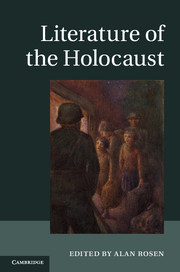Book contents
Chapter 2 - Wartime victim writing in Western Europe
Published online by Cambridge University Press: 05 June 2014
Summary
The victim wartime writers to be considered here are Jews for whom, although they were often unaware of it, wartime was to be a time of mass extermination. Despite their many differences in background, age, and upbringing, they had one thing in common: they put their words to the page along the edge of annihilation. This defining feature of their existential condition shaped the nature of their writing, the motives for their writing, and the stake in their writing. Pressed for time and in lands under German occupation, they had no time for rewriting. Regardless of genre, this victim wartime writing is characterized by an air of urgency, a sense of responsibility, and an impetus to testimony. And yet they had no real expectation that their words would see the light of day. Putting their pen to paper required both courage and faith on the part of these authors, as they took up their task in the midst of fear and foreboding.
As one might expect, much of the victim writing during the Holocaust took the form of diaries; they make up most of the writing that found its way into print. The Jews who kept their diaries did so in secrecy and at the risk of their own lives. Their entries measured not only the remains of the day but also the spilling of blood, charged as they were with a testimony not only to personal experience but also to communal ordeal. In contrast to the diaries of Eastern Europe, those that came from the West were not written in ghettos but in hiding places, camps, and sites where Jews awaited deportation. The fiction written during this time has similar characteristics, although there were far fewer works of fiction written under the shadow of Nazism; unlike the diaries, they were written by accomplished authors. Some are highly allegorical; others chronicle confrontations with the Nazi evil that had befallen the world. Letters make up yet another genre, and they have their distinctive features. Undoubtedly, given the dispersion of Jews throughout Europe, more people were writing letters than diaries or fiction; yet the number of published volumes of letters is comparable to published volumes of fiction, and there are far fewer than published volumes of diaries.
- Type
- Chapter
- Information
- Literature of the Holocaust , pp. 33 - 48Publisher: Cambridge University PressPrint publication year: 2013
References
- 1
- Cited by



